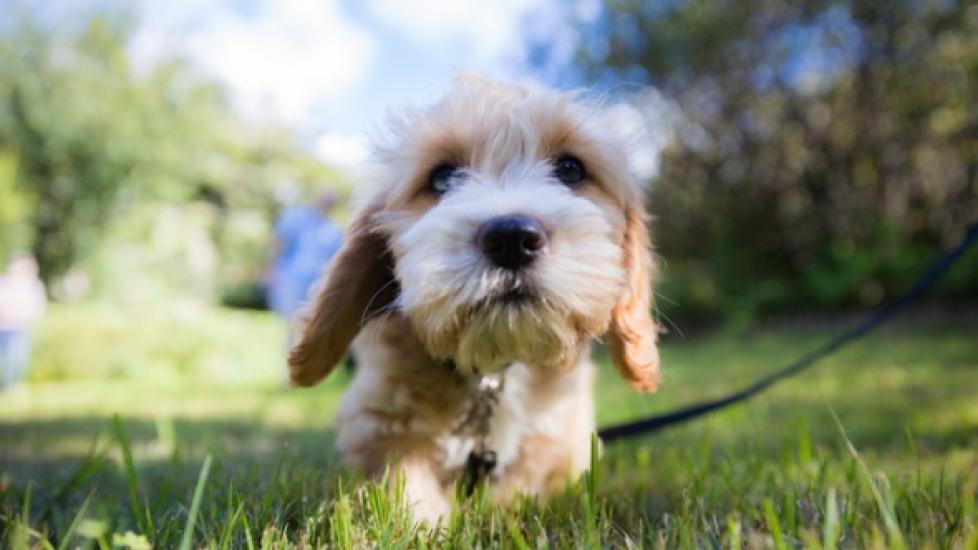The Importance of 'Scent Walks' for Dogs
Reviewed and updated for accuracy on April 27, 2020, by Jennifer Coates, DVM
Most pet parents have two goals when they set off for a walk with their dog: elimination and exercise.
While both are critical to maintaining a happy and healthy dog, limiting your pup to those basic elements skips an important part of the canine experience—engaging your dog’s sense of smell.
In large part, our dogs “see” the world through scent, and allowing them to interact with their environment through their noses taps into an often-overlooked processing tool.
“Our daily lives with our dogs typically don’t permit them to exploit the full abilities of their incredible noses,” says Alexandra Horowitz, author of "Being a Dog: Following the Dog Into a World of Smell." "We hurry them along during walks, focused on the destination rather than the journey itself."
But we can change that “hurry along” dynamic and encourage sniffing enrichment by letting our dogs’ noses lead the way. Here are some facts about your dog’s sense of smell and how to take a “scent walk” that takes full advantage of it.
How Dogs Understand Scents
Not only do dogs have hundreds of millions of scent receptors as compared our six million, but they also devote approximately 40 times more brain volume to decoding smells than we do.
This means that dogs are able to understand scent in a way that’s difficult for us to comprehend. A dog’s sense of smell can be loosely compared to human sight.
Dogs smell to gain context of their environment, which includes the unique signature of other beings that have traveled that route before them, as well as elements that are abstract, like the passage of time or pending weather changes.
A Dog's Need to Sniff Is Often Taken for Granted
“We humans simply don't see the world from an olfactory point of view: we not only can't smell all that a dog can, we simply aren't interested in smells in the same way,” Horowitz says. “So even though we now know that dogs need exercise and socialization, it's taken longer for us to even see that they need to sniff.”
Dogs can be trained to sniff out bombs, bedbugs, and fugitives; they can locate the scat of endangered animals over land, air, and water; and can even detect certain cancers in humans. The scope of their abilities is almost beyond comprehension, which makes the accidental ways in which we discourage our dogs’ sniffing all the more unfortunate.
How to Take a Scent Walk
Horowitz suggests that there’s a simple way to engage your dog’s scenting abilities: take her on a “smell walk” or “scent walk.”
A scent walk changes the focus of the walk from miles covered to odors logged, which probably requires a different mindset for most pet parents. Instead of having a specific destination, the route of a scent walk meanders as your dog absorbs and processes the scents along the way.
It’s easy to take a scent walk. Just set off on a path, and when your dog stops for a sniff, let her. Be fully engaged, which means: put away your phone and pay attention to your dog.
Horowitz says that it can be challenging for pet parents to be patient while their dogs engage their nose, but if you tune into what your dog is doing, you’ll understand how much she enjoys having the freedom to sniff to her heart’s content.
You’ll also likely gain new insights into your dog’s behavior when you take a scent walk. Is your dog a drive-by sniffer, eager to inhale as many new scents as possible? Or does your dog hunker down and dedicate herself to smelling one location with great intensity?
As you stroll, allow your dog to select the path and the amount of time she spends on each odor, but remember to keep leash manners in mind and don’t let your dog pull you along.
The Benefits of Scent Walks
Horowitz says that there’s an important behavioral component that comes into play during scent walks.
“I've found that when dogs are allowed to use their noses, they actually display a lot less ‘misbehavior,’” she says. “It's as if the thing that they have decided to be their ‘work,’ barking at each approaching dog, say, or always being vigilant (and thus anxious) about where you are, can be replaced with this more natural behavior, if they are allowed to sniff. In other words, it makes them happy.”
That said, pet parents don’t always have the time to devote to nose-to-the-ground walks. Horowitz says that not every walk you take with your dog has to be a scent walk.
She says that pet parents can take their dogs for—and teach them the difference between—typical exercise walks, late night potty trips, and walks with other canine friends without needing to stop and sniff the world along the way.
But it’s important to make time for occasional smell walks as well. “Just leave some space for your dog to use their nose,” she says.
Featured Image: iStock.com/jamenpercy
